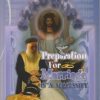Private Worship in the Coptic Church
One Worshipping Life
In his daily life, conduct and worship, the believer bears an integral indivisible life, either life “in Christ” or “out of Christ.” When he enjoys his life “In Christ,” his fellowship in public worship is complimented by practicing his unseen private worshipping; as both represent one devotional life. In other words, sharing the church liturgies with the congregation, a believer fortifies his spiritual life when he goes into his private room and shuts the doors of his senses. Thus when he is among the group physically, his heart, mind and soul are at liberty in heavens meeting and conversing intimately with God as though the universe embraces none but them both. And when he enters into his private room, closes the outer door and pours forth in front of God in a true spiritual worship he holds the whole world -in his heart; I mean the whole human race praying for them and seeking their prayers on his behalf While he is in his room he feels he is inside the church that unites a host of spiritual militants with the victorious including the heavenly hosts.
In the fight of this concept we cannot draw a dividing line that separates between church life and private worshipping life, because the church is every believer holding firmly together with his brethren in the One Head.
That is why in the present time, due to housing problems in Egypt, when a believer does not find a private room to pray in solitude, he stands or bows in prayer in the presence of the family members. He does not abstain from praying because he does not have a private locked room. His room is already inside him if he chooses to shut out his senses.
In the fight of this concept we cannot draw a dividing line that separates between church life and private worshipping life, because the church is every believer holding firmly together with his brethren in the One Head.
That is why in the present time, due to housing problems in Egypt, when a believer does not find a private room to pray in solitude, he stands or bows in prayer in the presence of the family members. He does not abstain from praying because he does not have a private locked room. His room is already inside him if he chooses to shut out his senses.
Private Or Individual Worship?
Individuality is non-existent in our Church’s dictionary. The spirit of individuality and isolation has been eliminated in the human loving Christ, that we might live in the spirit of collective love even if we were in our private rooms. This I have clarified frequently while talking about monasticism and monarchism. Hence monasticism is not an inner isolation from the community, or a practice of individual life, but it is a unity with God, the Lover-of-mankind.
Private Worship
In the Coptic Church, the believer practices many private forms of worships of which we mention:
1.The Canonical Hours (the Agbia prayers): The early church took after the Jewish Church the system of dividing the days into hours of prayers. Many of the Copts pray Matins and Compline and some pray Midnight. When they have the chance they pray other prayers. We need to notice the following in the Canonical Hours prayers:
3.It is worthy of a believer also to practice “kneeling” (Metanias), as a sign of contrition and repentance. The believer trains himself to practice “kneeling” for the salvation of others.
4.Preoccupation with God through the day, that is “prayer of calling Jesus’ name”. Which is called the “arrow prayer,” in which the believer cries out from moment to moment with a short prayer calling the name of our Lord Jesus Christ as an arrow to strike with, the snares of our enemy Satan. This action, simple as it is, has its own effectiveness in the life and worship of the believer.
5.Praises, glorification and beatification: some believers practice church hymns daily or on feasts as a private worship in their bedrooms. Here we need to mention that some Copts prefer setting up a special corner for prayer. If this is not easy to do we find that many icons decorate their homes as a sign of their longing for holy life in God and fellowship with the saints.
1.The Canonical Hours (the Agbia prayers): The early church took after the Jewish Church the system of dividing the days into hours of prayers. Many of the Copts pray Matins and Compline and some pray Midnight. When they have the chance they pray other prayers. We need to notice the following in the Canonical Hours prayers:
- A Every prayer is called “song of praise,” as though the church is calling on her children to lead a life of joy if possible all the hours of their life, day and night.
- B In every hour the church offers us the memory of a certain phase of God’s redeeming work. The “Matin” song of praise reminds us of the resurrection of our Lord Jesus Christ and our daily resurrection to begin a new life in Him. The Terce (praise of the third hour) reminds us of the coming upon the church of the Holy Spirit of God, the Giver of perpetual renewal and holiness. In the Text we remember the crucifixion of our Lord Jesus Christ, while in the None (ninth hour) we remember the death in the flesh of our Lord and the acceptance of the right hand thief, in Paradise. In the Vespers (sunset) we remember the removing of our Lord’s Body from the cross, giving thanks for concluding the day, and asking Him that we might spend the night in peace. In Compline we remember the burial of the Body of our Lord watching for the end of our sojourn on earth… yet in the three midnight prayers we await for the advent of our Lord Jesus Christ.
- C The hourly songs of praise begins with giving thanks to God after the Lord’s prayer, then submitting our repentance (Psalms 50 [51]), followed by praise with Psalms.
3.It is worthy of a believer also to practice “kneeling” (Metanias), as a sign of contrition and repentance. The believer trains himself to practice “kneeling” for the salvation of others.
4.Preoccupation with God through the day, that is “prayer of calling Jesus’ name”. Which is called the “arrow prayer,” in which the believer cries out from moment to moment with a short prayer calling the name of our Lord Jesus Christ as an arrow to strike with, the snares of our enemy Satan. This action, simple as it is, has its own effectiveness in the life and worship of the believer.
5.Praises, glorification and beatification: some believers practice church hymns daily or on feasts as a private worship in their bedrooms. Here we need to mention that some Copts prefer setting up a special corner for prayer. If this is not easy to do we find that many icons decorate their homes as a sign of their longing for holy life in God and fellowship with the saints.




